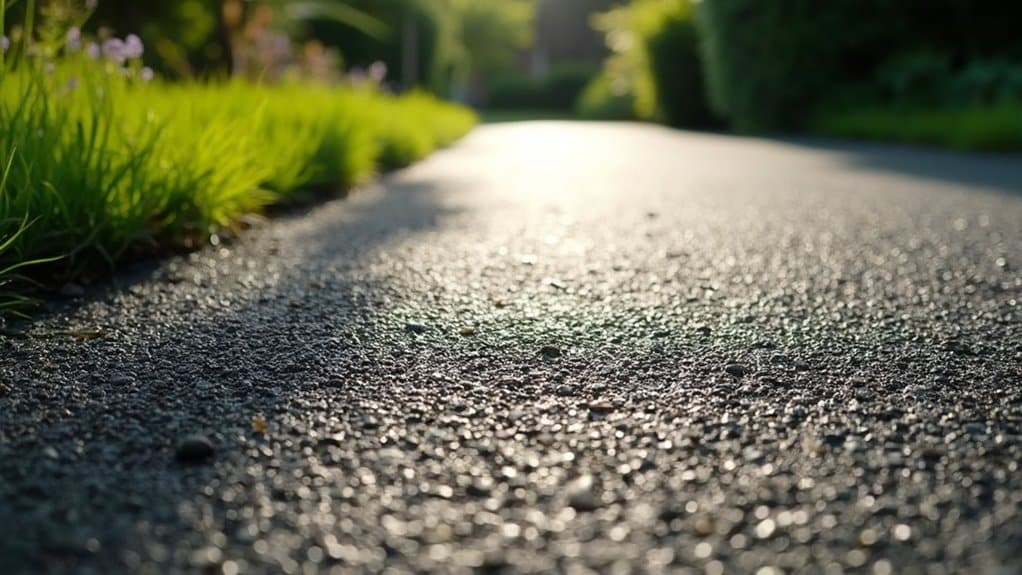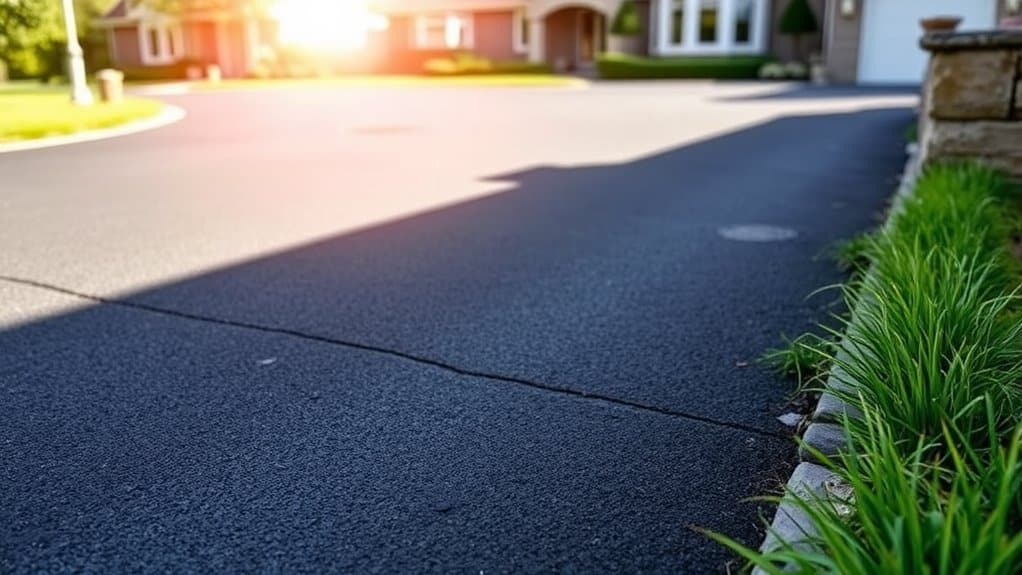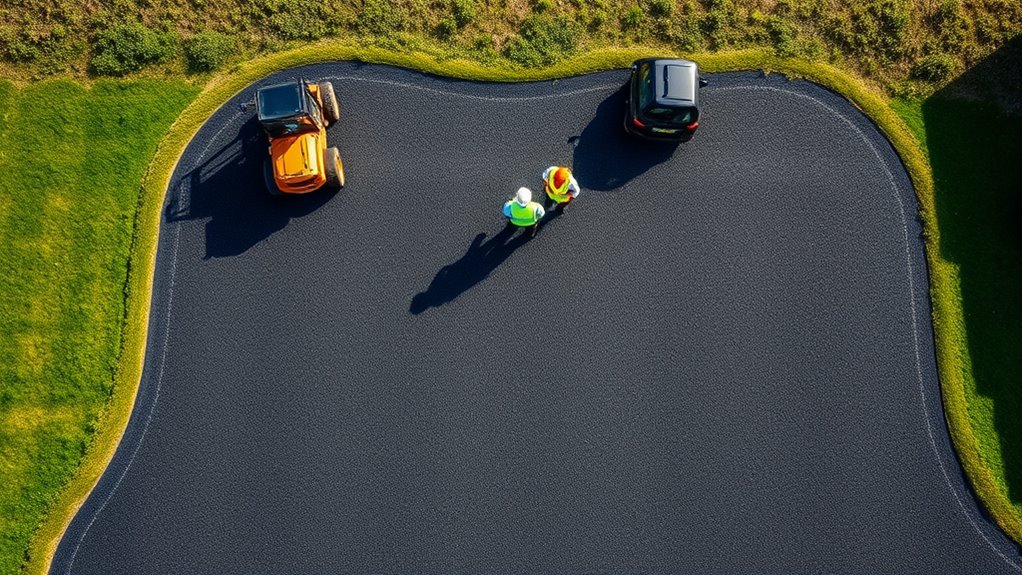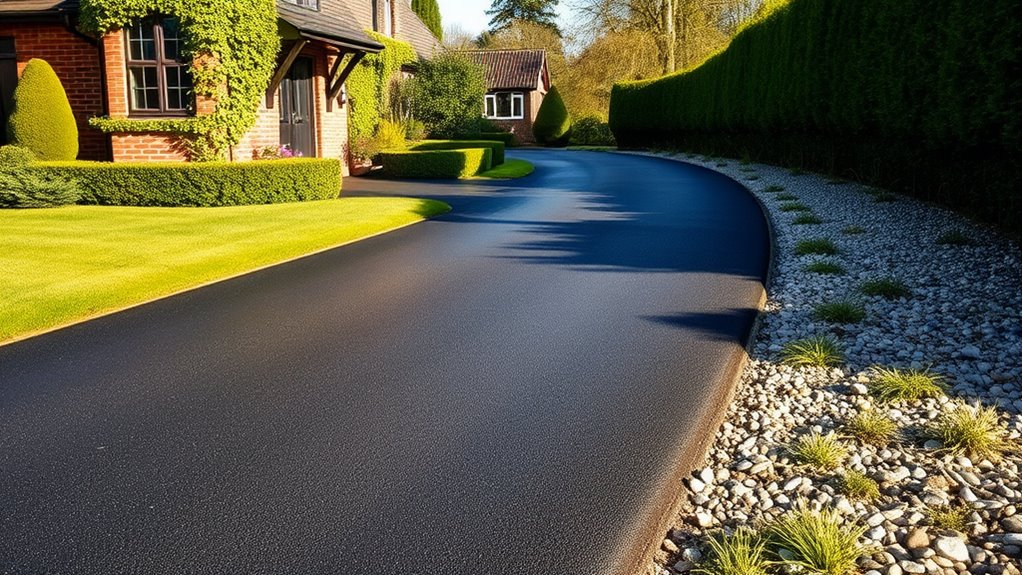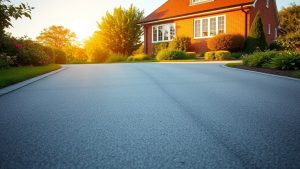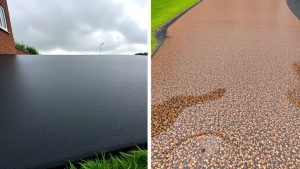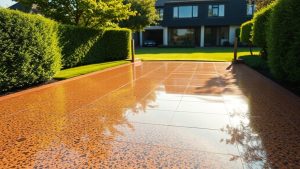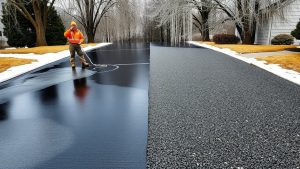Tarmac driveways are often misunderstood when it comes to their durability and maintenance. In reality, with proper installation and care, they can last between 15 to 20 years. Regular maintenance, such as sealing every 3 to 5 years, helps keep them in excellent condition without costing a fortune. Additionally, tarmac is eco-friendly, as it can incorporate recycled materials, making it a great option for environmentally aware homeowners. Interested in learning more about the benefits of tarmac and the installation process? Keep reading!
Table of Contents
ToggleKey Takeaways
- With proper maintenance, tarmac driveways can last between 15 to 20 years, dispelling the myth that they wear out quickly compared to other surfaces.
- Many people believe tarmac is solely made from tar, but modern tarmac primarily uses bitumen, which offers improved durability and flexibility.
- Regular maintenance, such as cleaning and sealing every 3 to 5 years, is crucial to avoid expensive repairs down the line.
- Tarmac is often considered environmentally friendly due to its high recycling rate and the fact that it requires fewer replacements, reducing overall environmental impact.
- The quality of installation plays a vital role in the lifespan of your driveway; hiring reputable contractors ensures a well-prepared and long-lasting surface.
Understanding Tarmac: What It Really Is
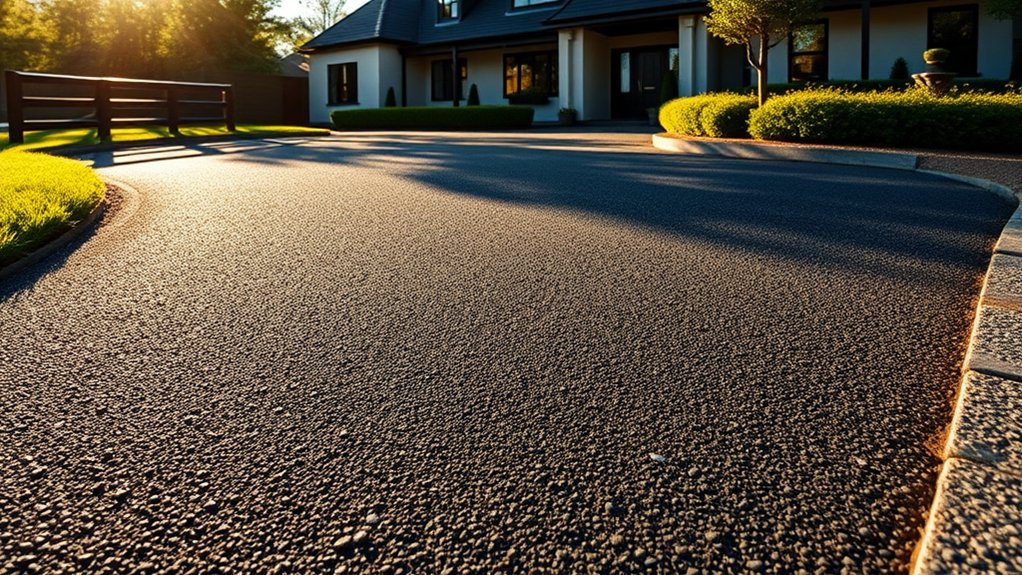
Understanding what tarmac is can help you make informed choices for your driveway. Tarmac, a blend of crushed stones and aggregates, is held together by binding agents. While traditional tarmac used tar, modern versions typically use bitumen, which provides better flexibility and durability. The composition of tarmac varies based on the aggregates and binding agents, influencing its strength and lifespan. Tarmac driveways consist of crushed stones that are compressed together to create a solid surface, making it a cost-effective option for driveways. However, keep in mind that tarmac is less resistant to heavy traffic and chemicals than asphalt. Regular upkeep is necessary to prevent higher repair costs in the future, so consider your specific needs carefully before deciding.
Environmental Benefits of Tarmac
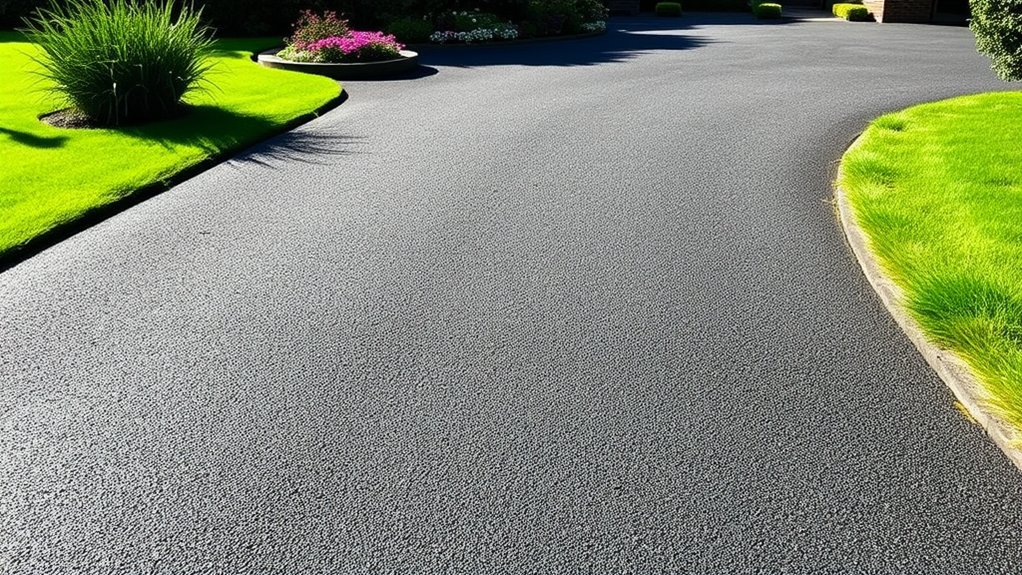
Choosing tarmac for your driveway means opting for a material that embraces sustainable recycling.
By using recycled asphalt, tarmac significantly reduces its carbon footprint, making it an environmentally friendly choice. Moreover, its long-lasting nature means you won’t need to replace it as often, which further lessens its impact on the environment. Additionally, tarmac’s durability ensures that fewer resources are consumed in repairs and replacements over time. Furthermore, innovations in tarmac production are driving sustainability efforts within the industry.
Sustainable Material Recycling
Tarmac driveways provide significant environmental advantages through sustainable material recycling.
By utilising recycling technologies, you can help create a greener future. Here are some key benefits:
- High Recycling Rate: Almost all old asphalt is recycled, reducing landfill waste.
- Closed-Loop System: Reclaimed asphalt is repurposed in new tarmac mixtures, promoting a circular economy.
- Reclaimed Materials: Advanced technologies can rejuvenate old asphalt binder, decreasing the need for new resources. This process aligns with eco-friendly materials that contribute to sustainable construction practices.
- Waste Reduction: Recycling diminishes environmental impacts and supports sustainable practices. Additionally, the use of reclaimed asphalt pavements allows for the reactivation of old binder, minimizing the need for virgin asphalt cement.
Choosing a tarmac driveway not only enhances your property but also contributes positively to the environment.
Reduced Carbon Footprint
Opting for a tarmac driveway not only boosts your property’s curb appeal but also benefits the environment. Tarmac is produced with low energy consumption, aiding in carbon neutrality. Its quick installation further cuts down energy use, while modern manufacturing techniques help reduce greenhouse gas emissions.
Here’s a brief overview of the environmental advantages:
| Benefit | Description | Impact |
|---|---|---|
| Reduced Energy Use | Low energy manufacturing | Lower carbon footprint |
| Water Management | Permeable designs | Supports eco-friendly practices |
| Heat Island Mitigation | Reflective coatings | Cooler urban areas |
Choosing tarmac promotes sustainable water management and minimises waste, making it a sensible, eco-friendly choice for your driveway.
Durability and Lifespan of Tarmac Driveways
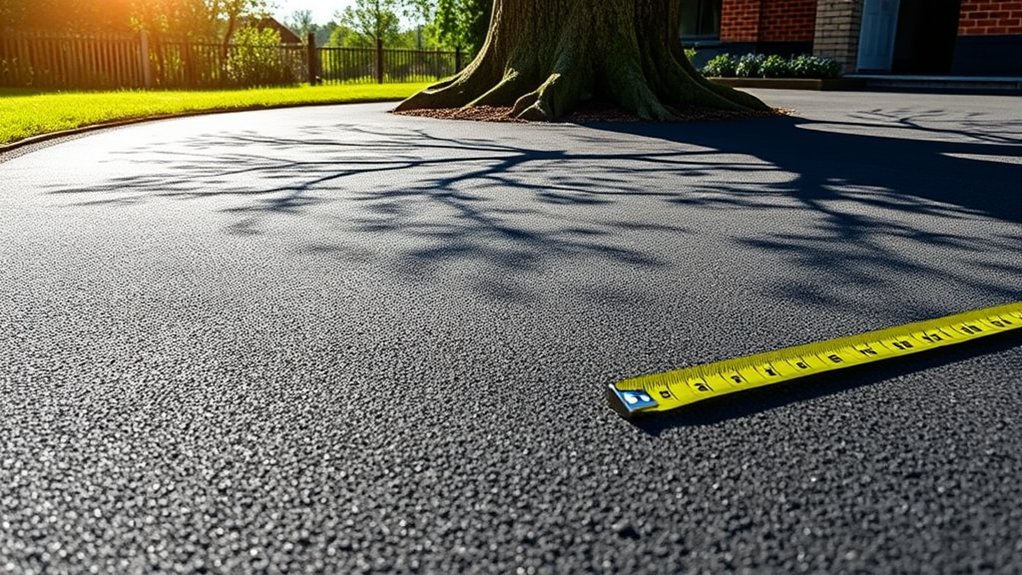
A well-maintained tarmac driveway can last between 15 to 20 years, making it a robust option for homeowners.
To ensure you get the most out of your tarmac, consider these essential tips:
- Installation Quality: Always hire reputable contractors for proper preparation and installation.
- Regular Maintenance: Clean and seal your driveway regularly to protect it from moisture and UV damage.
- Material Quality: Invest in high-quality materials that can withstand wear and tear.
- Traffic Management: Limit heavy traffic and avoid sharp turns to prolong its lifespan.
Common Maintenance and Repair Practices
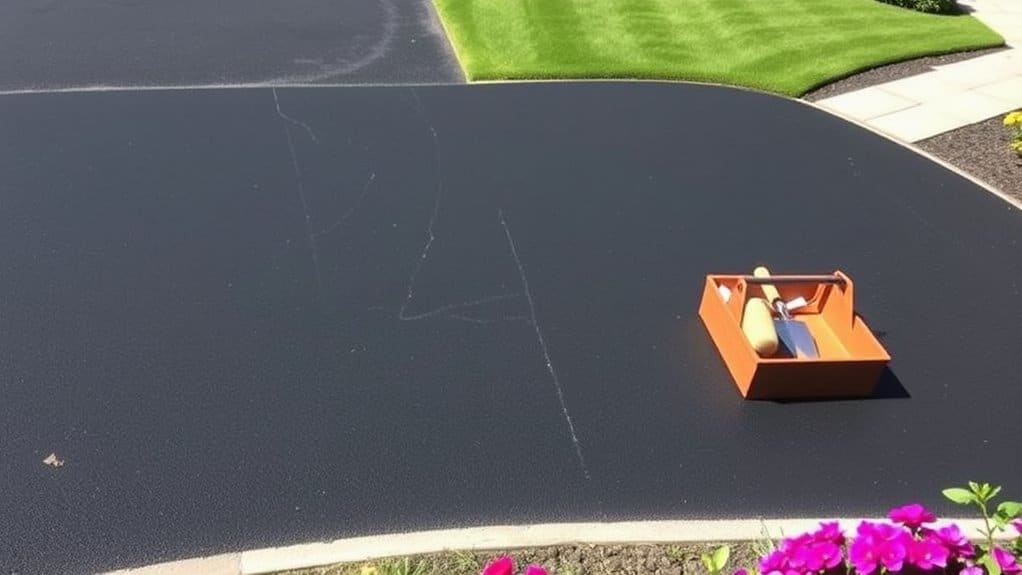
A tarmac driveway is durable and long-lasting, but it does require regular maintenance to stay in good condition. Many people think maintenance costs are high, but basic upkeep like cleaning and sealing is quite affordable.
Essential maintenance tools include brooms, stiff brushes, and pressure washers for effective cleaning. Regularly inspecting your driveway can help identify cracks and fading early, avoiding more significant problems later.
Be sure to remove debris frequently, especially in autumn, and apply sealant every 3-5 years to guard against weather damage. For tough stains or oil spills, use specialised cleaners and degreasers.
Installation Process: What to Expect
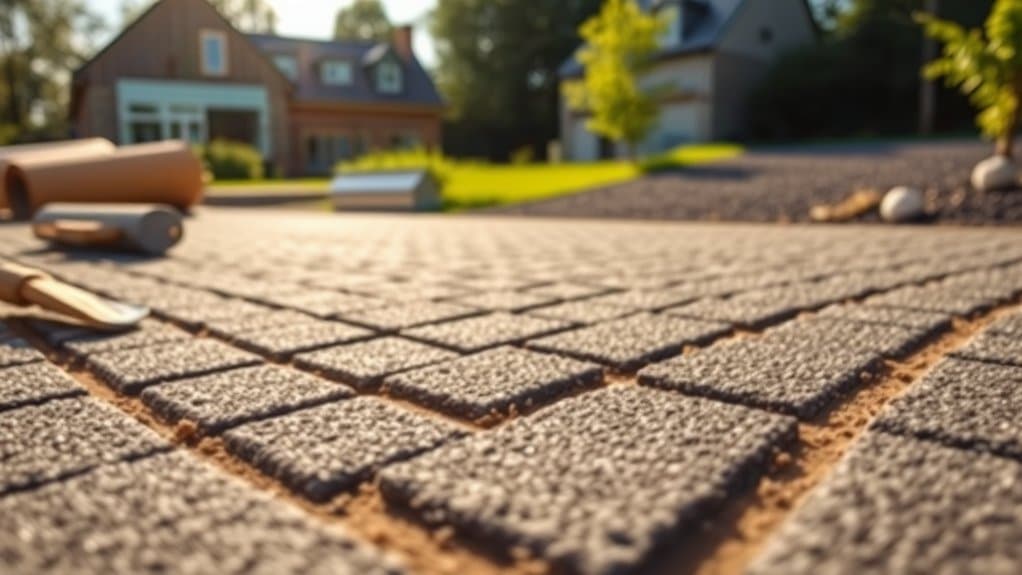
When you’re set to install a tarmac driveway, the first step is to prepare and assess the site properly.
Ensure the area is cleared and measured accurately to lay a solid foundation.
With expert installation methods, you can expect a smooth, durable driveway that enhances your home’s appeal.
Preparation and Site Assessment
Before starting the tarmac installation, it’s essential to focus on proper preparation and site assessment to ensure a long-lasting driveway. Here’s what to prioritise:
- Clear the site: Remove any dirt, debris, and vegetation to create a clean foundation.
- Assess soil conditions: Identify the soil type and make any necessary adjustments to enhance stability.
- Grade for drainage: Ensure there’s a slope to prevent water from pooling.
- Conduct site tests: Check that the site complies with the required standards for tarmac installation.
Don’t forget to analyse drainage and identify any utility lines to avoid future complications.
Professional Installation Techniques
With a solid foundation established through careful preparation and site assessment, you’re now ready to delve into the professional installation techniques that will bring your tarmac driveway to life.
First, excavation removes existing materials to a depth of 200-250mm. Next, a crushed aggregate sub-base is laid and compacted to ensure stability and proper drainage.
Edging materials are then installed to define boundaries, preventing the tarmac from spreading and facilitating effective drainage.
The application process begins with a binder course, followed by a top layer for added durability. Finally, compaction provides a smooth finish before sealing the joints.
Adhering to installation standards is crucial for dispelling myths about tarmac’s longevity and performance, ensuring your driveway remains functional for years to come.
Cost-Effectiveness of Tarmac Driveways
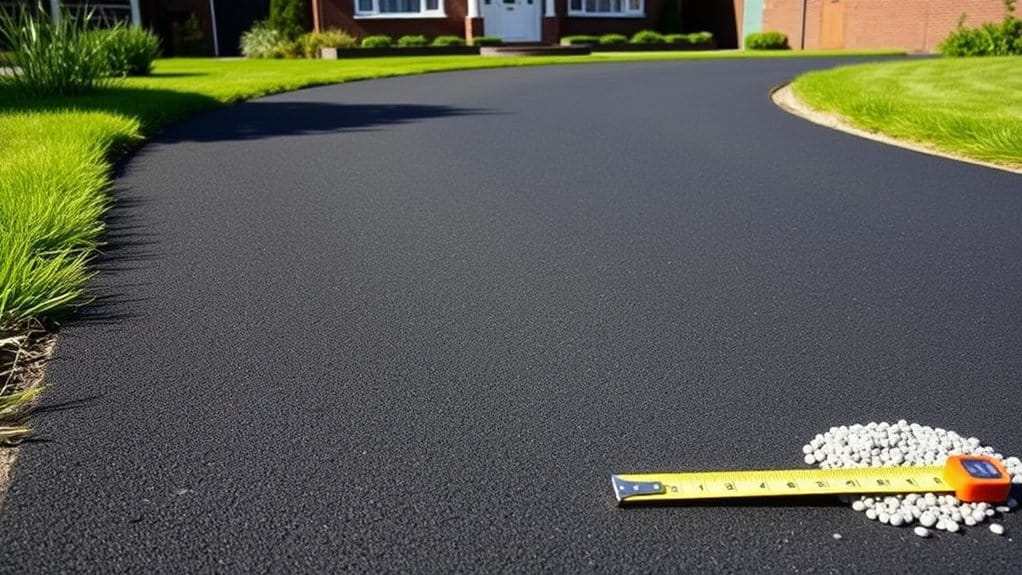
Many homeowners are concerned about the costs of driveway materials, but tarmac driveways often stand out as a cost-effective choice. Here’s why:
- Low Installation Costs: Tarmac can be laid quickly, which reduces labour expenses.
- Affordable Materials: Tarmac generally offers lower material costs per square metre compared to other options.
- Easy Repairs: Should you need repairs, tarmac is simpler and cheaper to fix than most alternatives.
- Long-Term Savings: Its durability leads to fewer repairs over time, resulting in significant savings.
Choosing a tarmac driveway not only boosts your property’s appeal but also ensures minimal maintenance, making it a wise long-term investment.
The balance between initial costs and future savings makes tarmac an excellent option.
Frequently Asked Questions
Can Tarmac Driveways Be Installed in Cold Weather?
Yes, you can install tarmac in cold weather, but it’s essential to consider the temperature. Ensure the ground is free from frost, and plan carefully to avoid issues. Hiring a professional can help ensure a successful installation, improving durability and performance in colder conditions.
Are Tarmac Surfaces Prone to Cracking Over Time?
Isn’t it annoying when your driveway starts to crack? Tarmac surfaces can indeed develop cracks over time. However, by following some simple maintenance tips and prevention techniques, you can keep your driveway looking smart and extend its lifespan. For instance, regular cleaning and sealing can help protect against the elements.
What Colors Are Available for Tarmac Driveways?
You can choose from a variety of tarmac colours for your driveway, including classic black, vibrant red, earthy brown, and subtle green. Each shade can enhance your property’s appearance and complement its design.
How Do Tarmac Driveways Affect Property Value?
Tarmac driveways can significantly increase your property’s value thanks to their durability and appealing appearance. By opting for a tarmac surface, you’re not only enhancing the look of your home but also making it more attractive to potential buyers who may be willing to offer a higher price. For instance, a well-maintained tarmac driveway can create a strong first impression, setting your property apart in a competitive market.
Can Tarmac Be Used for Eco-Friendly Landscaping Projects?
Yes, tarmac can be used in eco-friendly landscaping projects. By incorporating sustainable materials and considering alternatives to traditional tarmac, you can improve drainage and support biodiversity. For example, permeable tarmac allows water to filter through, reducing run-off and promoting plant growth. This makes your landscape both practical and environmentally responsible.
Conclusion
In summary, tarmac driveways provide a combination of durability and environmental advantages that can be a wise choice for many homeowners. A well-maintained tarmac driveway can last up to 30 years! With the right care, you can enjoy its attractive look and practicality for decades. If you’re thinking about an upgrade, tarmac could be just what you need. Be sure to consider the benefits and costs carefully to make an informed decision!
Just how long can you expect your tarmac driveway to last? Discover key factors and maintenance tips that can extend Read more
From planning to final touches, discover the essential steps of tarmac driveway installation—what could go wrong if you skip any Read more
Wondering if a tarmac driveway is the perfect fit for your home? Uncover the essential pros and cons before making Read more

